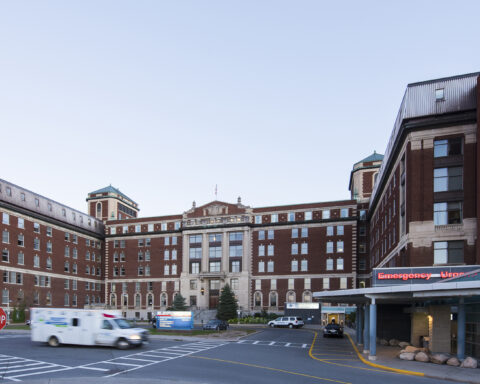As the federal election campaign goes into high gear, a distinct Punjabi flavour is permeating Canadian politics with some 40 Punjab-origin men and women in the fray for office on Parliament Hill.
All three main political parties in Canada—the Conservatives, the Liberals and the New Democratic Party have put up Punjab-origin people, mostly Sikhs as their candidates, mainly in Brahmpton, Surrey, Calgary and Edmonton.
“There is a lot of Punjabi tadka in the Canadian elections. However, there is lot of difference in the style of campaigning in Canada and India,” said a Punjabi politician in the election fray, according to the Tribune, one of India’s biggest media houses, which is keeping a close eye on the elections.
Punjabi candidates could be ‘make or break’ for parties
Latest polls show that Canada’s federal election on Oct 19 is too close to call, with a virtual three-way tie a little more than a month before voters cast their ballots.
The three parties are in a statistical dead heat, according to a survey by the Ekos polling firm, which showed the New Democrats hanging onto an insignificant lead with 30.2 per cent voter support — well within the margin of error.
In several ridings it’s Sikh versus Sikh.
Prime Minister Stephen Harper’s Tories, meanwhile, had 29.5 per cent support, and the Liberals polled 27.7 per cent in the survey of some 3,243 Canadian voters.
The sampling error for the August 26 to September 1 survey was 1.7 per cent. Given the tight race, the Punjabi-origin candidates with their ethnic support could make or break a party, political analysts said.
Going up against each other
In several ridings it’s Sikh versus Sikh.
One of the prominent faces in the poll fray is Bal Gosal, a minister who is contesting as a candidate of the Conservatives Party from the Brampton Centre constituency. The Liberals have put up Rameshwar Sangha against him.
The hottest electoral battle among Punjabis is said to be in the Surrey Newton constituency.
Another minister, Tim Uppal, is contesting from Edmonton Millwoods. The Liberals have put up Amarjeet Kohli to oppose him.
The hottest electoral battle among Punjabis is said to be in the Surrey Newton constituency where Sukh Dhaliwal of the Liberals, Harpreet Singh of the Conservatives and sitting MP Jinny Sims of the NDP are in the fray.
The NDP has put up Harbaljit Kahlon form Brampton East, Martin Singh from Brampton North and Amarjit Singh from Brampton South constituencies. It also has put up Sahajvir Singh Randhawa from Calgary Skyview, Jasbir Deol from Edmonton Millwoods, Bill Sundhu from Kamploop, Jasbir Sandhu from Surrey Centre, Amardeep Nijjar from Vancouver South.
The Liberals have put up Harjit Sajjan in Vancouver South, Raj Grewal from Brampton East, Sonia Sidhu form Brampton South, Kamal Khera from Brampton and Raj Saini from Kltchender Centre. Navdeep Bains is its candidate from Mississauga Malton. The other candidates put up by the Liberals include Jagdeesh Grewal, Darshan Kang, Joti Sidhu, Sukh Dhaliwal, Anju Dhillon and Gagan Sikand.
The candidates put up by the Conservatives include Nina Grewal, Harpreet Singh, Sucha Thind, Devinder Shory, Deepak Oberai, Jagdish Grewal and Ravinder Malhi.
“Ethnic vote” not to be taken for granted
Canada’s history of large immigrant inflows combined with a high naturalization rate (citizenship acquisition) has made it an electoral imperative to court – not dismiss – the “ethnic vote.”, said Michael Adams, president of the Environics Institute and Andrew Griffith, a former director-general of Citizenship and Multiculturalism.
In the 2011 federal election, voters sent 42 foreign-born citizens to represent them as MPs in Ottawa.
No party has a monopoly on immigrants, new or long-settled, and none can take for granted the support of any ethnocultural or religious minority group, they said in a recently published article in the Globe and Mail.
In the 2011 federal election, voters sent 42 foreign-born citizens to represent them as MPs in Ottawa. That’s about 13 per cent of the then-308-member House of Commons. That proportion falls short of parity with our foreign-born population (20 per cent of us are foreign-born), but it comes quite close to matching the proportion of us who are foreign-born and Canadian citizens: 16 per cent.
Remarkably, the immigrants who were elected to Canada’s Parliament in 2011 had not only become citizens, gotten themselves nominated and then won election – but they represented all five main political parties: 18 Conservatives (of 166 elected), 18 New Democrats (of 103), four Liberals (of 34), and one each in the Bloc Québécois (of four) and the Green Party (of one). The Green Party is 100-per-cent foreign-born: Elizabeth May is from Hartford, Conn. The Bloc is dedicated to dismantling the country but managed to be inclusive of the foreign-born. Only in Canada.
[T]here’s every reason to expect that one day soon a person of non-European origin will be our prime minister.
Another “only in Canada” fact is that our most right-wing party, the Conservatives, attracts a substantial contingent of candidates born abroad.
The high proportion of foreign-born MPs suggests a willingness to elect people not born in Canada – but are Canada’s immigrant MPs all from countries like Britain and France, of which the dominant ethnocultural and religious groups mirror Canada’s? No. Canada’s foreign-born MPs came from everywhere: 15 from Europe, 11 from Asia, 11 from the Americas and five from Africa.
Oct. 19 and beyond
Looking ahead to our date with electoral destiny on Oct. 19, which ridings are likely to have interesting ethnocultural dynamics? Out of Canada’s 338 ridings (under the new boundaries), 15 have populations that are more than 70-per-cent visible minority. Ten of these are in the Greater Toronto Area (GTA), five in Greater Vancouver.
These ridings are mostly defined by Chinese and South Asian populations (mainly people from India, Pakistan and Sri Lanka); one, York West in Toronto, has 22 per cent who self-identify as black. Interestingly, only four have a majority of one ethnic group: Brampton East in the GTA and Surrey-Newton in Greater Vancouver have 60- and 59-per-cent South Asian residents, respectively.
Markham-Unionville in the GTA and Richmond Centre in Greater Vancouver have 57-per-cent and 51-per-cent Chinese residents, respectively. Another 18 ridings have visible-minority populations ranging from 50 to 70 per cent, but none of these has anywhere near a majority of only one group.
When it comes to another aspect of our ethnocultural diversity – religion – the picture becomes even more fragmented: In no riding in Canada does one non-Christian religious community comprise a majority of the population.
The highest proportion in the country is Surrey-Newton with 44-per-cent Sikh, followed by 34-per-cent Sikh in Brampton East. The next most populous religious group in one riding are those of Jewish faith: 37 per cent of the population in Thornhill (GTA) is Jewish, as is 31 per cent of Montreal’s Mount Royal riding. Canadian Muslims form between 15 and 20 per cent in six ridings.
It’s not unlikely that on Oct. 19, there will be 50 or more foreign-born legislators of all parties in our newly elected House of Commons. And there’s every reason to expect that one day soon a person of non-European origin will be our prime minister – but it’s anybody’s guess which party he or she will lead.
Published in partnership with South Asian Post.
The South Asian Post is Canada's premier English language Indo-Canadian newspaper.
The Post specialises in providing South Asian news and views from a Canadian perspective.
A print edition is published in Vancouver, British Columbia on a weekly basis, as well as an e-edition for the Calgary, Edmonton, Winnipeg, Toronto, and Montreal markets. As an Ontario South Asian newspaper, the South Asian Post covers weekly news from metropolitan areas like Toronto, Ottawa, Hamilton, and more.




